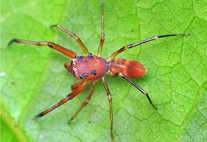Abstract
Inland epigean freshwater amphipods of Romania are diverse and abundant for this region has a favourable geographical position between the Balkans and the Black Sea. Excluding Ponto-Caspian species originating in brackish waters and freshwater subterranean taxa, there are 11 formally recognized epigean freshwater species recorded from this country. They belong to 3 genera, each representing a different family: Gammarus (Gammaridae, 8 species or species complexes), Niphargus (Niphargidae, 2 epigean species) and Synurella (Crangonyctidae, one species). Their large-scale distribution patterns nevertheless remain obscure due to insufficient data, consequently limiting biogeographical interpretations. We provide extensive new data with high resolution distribution maps, thus improving the knowledge of the ranges of these taxa. Gammarus species display substantial altitudinal variability and patchy, fragmented distribution patterns. They occur abundantly, particularly in springs and streams, from lowlands to sub-mountainous and mountainous regions. In the light of recent molecular research, we hypothesize that the complex geomorphological dynamics of the Carpathian region during the Late Tertiary probably contributed to their allopatric distribution pattern. Contrasting with Gammarus, the genera Niphargus and Synurella exhibit low altitudinal variability, broad ecological valences and overlapping distributions, being widespread throughout the lowlands. The current distribution of N. hrabei and N. valachicus seems to be linked to the extent of the Paratethys during the Early Pliocene or Pleistocene. We further discuss the taxonomic validity of two synonymized and one apparently undescribed taxon, and provide an updated pictorial identification key that includes all taxa and forms discussed in our study. The mosaic distribution of epigean freshwater amphipod species in Romania shows that this region is particularly suitable for phylo- and biogeographical analyses of this group.

